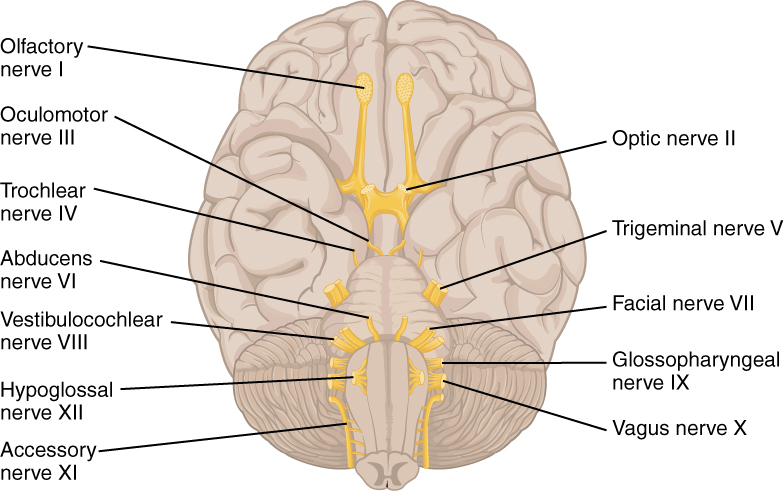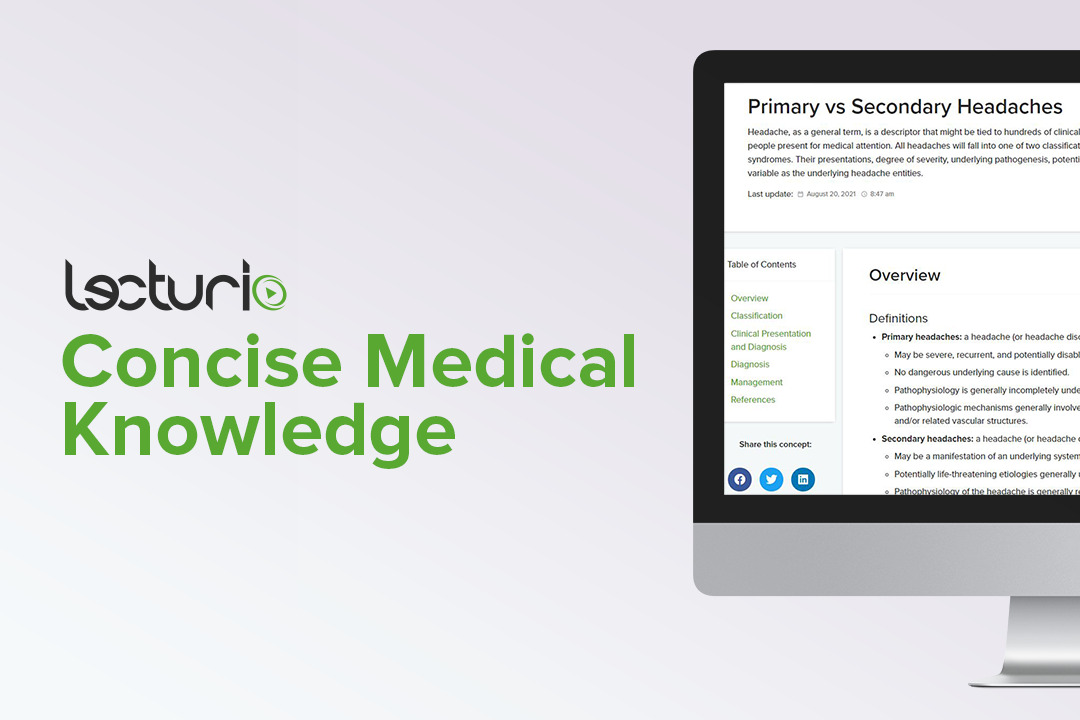Playlist
Show Playlist
Hide Playlist
SUNCT and SUNA
-
Slides Headaches Paroxysmal Episodic Headaches.pdf
-
Download Lecture Overview
00:01 Now let's talk about the third TAC. 00:03 And this TAC has the shortest duration of episodic headaches. 00:08 And this is SUNCT, which stands for short lasting, unilateral, neuralgia form headaches, with conjunctival injection and tearing. 00:18 It's exactly what it spells. 00:21 SUNCT is characterized by very, very short episodes, 1-600 seconds. 00:26 Attacks of unilateral orbital supraorbital or temporal with a very stabbing and pulsating pain. 00:33 Patients have tonnes of these attacks during the day, 3-200 attacks during the day. 00:38 So that the shortest lasting but then the most during the day. 00:42 Pain is accompanied by ipsilateral conjunctival injection and lacrimation. 00:46 Given the name, it must not be attributable to any other disorder and at least 20 attacks must fulfill these criteria to establish the diagnosis. 00:57 Here we can see how pain is described in patients. 01:00 The pain is a stabbing, burning, pricking or shock like sensation. 01:05 There's maximal intensity within 2-3 seconds. 01:08 And that's maintained for the duration of the attack, again, a very short attack. 01:13 And there are a number of different pain patterns. 01:16 Here we can see graphically some of those pain patterns. 01:20 So there's a single stabs pattern. 01:22 This where patients will have single episodes of very severe short lasting pain that remits goes back down to normal in between. 01:30 We can see groups of stabs where there's multiple stabbing episodes of pain all lasting a very short duration. 01:37 And then the last would be a sawtooth pattern where pain comes on. 01:40 They're very severe episodes that occur, and then that goes away at the resolution of that episode. 01:47 And each of these is consistent with a diagnosis of SUNCT. 01:51 What else do patients describe? Some patients have dull discomfort between the attacks that's more sawtooth pattern. 01:57 Most patients have spontaneous or triggered attacks. 02:00 Triggers can include cutaneous stimulation and neck movement. 02:04 Refractory period after an attack is very rare. 02:08 Nocturnal attacks are also rare, we see them with cluster, we don't see them with SUNCT as frequently. 02:15 And unusual features include bilaterality or alternating sides and that should really prompt diagnostic testing before making this diagnosis. 02:24 There's also a sister syndrome called SUNA, that short-lasting, unilateral, neuralgia form headache with attacks with cranial autonomic features, very prominent autonomic features. 02:35 With SUNA, we don't see the conjunctival injection and tearing that we see with SUNCT. 02:41 But otherwise it's described the exact same way and may really be a subset of SUNCT. 02:47 Similar to SUNCT, the location is more varied but less cutaneous triggers are seen with SUNA. 02:54 So what are some of the secondary causes of both SUNCT and SUNA? Multiple sclerosis can cause lesions that can contribute to these pain episodes. 03:02 Rathke's cleft cyst which is a cyst in the pituitary sellar region can present this way. 03:07 Osteogenesis imperfecta with basilar impression. 03:11 Tumors, a number of different tumors. 03:14 Vascular lesions including this megadolichobasilar artery that's an enlarged basilar artery can present and has been associated with this. 03:23 Infectious causes, iatrogenic causes, dopamine agonists and others. 03:30 What about treatment? How do we treat something SUNCT and SUNA? Well, really, this is usually refractory to many medications. 03:36 Steroids can be used for those acute attacks for those many clusters of attacks. 03:40 During the day, IV lidocaine, subcutaneous lidocaine has been tried. 03:45 There's no response to indomethacin which makes it different from paroxysmal hemicrania. 03:50 A number of AEDs can be tried and are utilized as with the other trigeminal autonomic cephalalgia and Verapamil. 03:58 Botulism toxin can be used. 04:00 Gamma knife is considered in particularly severe cases that are refractory. 04:05 Occasionally on an investigational situation, we would consider DBS to the posterior hypothalamus, there's a hypothalamic component to this. 04:13 Neurovascular decompression, percutaneous balloon compression or surgery. 04:17 And again, these are really reserved for the exceptional and rare cases where this remains refractory to other interventions.
About the Lecture
The lecture SUNCT and SUNA by Roy Strowd, MD is from the course Headache.
Included Quiz Questions
What is the duration of a Short-lasting, Unilateral, Neuralgiform attack with Conjunctival injection and Tearing headache?
- 1–10 minutes
- 2–30 minutes
- 1–2 hours
- 3–12 hours
- 12–24 hours
What features are seen with a SUNCT headache that are not seen in a SUNA headache?
- Conjunctival injection and tearing
- Pupillary dilation
- Clustering and triggers
- Cutaneous sensitivity and tumor-associated
- Positive response to indomethacin
Customer reviews
5,0 of 5 stars
| 5 Stars |
|
5 |
| 4 Stars |
|
0 |
| 3 Stars |
|
0 |
| 2 Stars |
|
0 |
| 1 Star |
|
0 |





